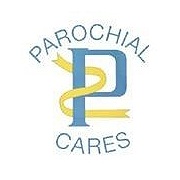Art at Parochial
The Art Curriculum at Parochial
'Parochial Cares', our mission is to prepare children for the future by living, learning and growing together in God.
To live life... life in all its fullness- (John 10:10)
Vision:
At Parochial, we aim to inspire children’s artistic skills, passion for art, and understanding of the people who work within this creative field. Our Art curriculum is carefully planned to ensure that pupils make clear, meaningful progress throughout their time with us.
As children move through the school, they build a strong foundation of skills, technical vocabulary, and an understanding of key artists who influence their learning. Art at Parochial develops the whole child, supporting personal expression, creativity, and cross-curricular learning, while encouraging pupils to contribute to and appreciate their wider community.
Implementation:
Click an image below to see how we embed our school values through Art at Parochial.
At Parochial we are:
Art-At-Parochial (ID 1021)
-
Educating for Dignity and Respect through Art
Educating for Dignity and Respect through Art
Children learn to value the work of others and take pride in their own artistic journey. In the Early Years, they begin to understand that art is created with care and intention.
In Key Stage 1, they develop the ability to describe the work of others, use basic artistic vocabulary, and annotate their sketchbooks with teacher-guided prompts.
By Key Stage 2, children evaluate their work and the work of others with increasing depth, developing independence in their annotation and discussion. They are encouraged to form their own opinions, use subject-specific language, and engage in thoughtful critique with kindness and maturity
-
Educating for Hope and Aspiration through Art
Educating for Hope and Aspiration through Art
We expose children to a diverse range of artists and photographers throughout their school journey. These include Carl Giles (cartoonist), Luz Perez Ojeda (optical illusions), Andy Warhol, Banksy, and others.
Teaching is often inspired by these artists' work, providing opportunities for rich discussion and reflection on how art connects with other curriculum areas such as science, writing and maths. Children also explore how artistic skills link to potential career paths, encouraging aspiration and self-belief.
-
Educating for Wisdom, Knowledge and Skills through Art
Educating for Wisdom, Knowledge and Skills through Art
We provide a carefully structured progression of skills that begins in the Early Years. Pupils are encouraged to explore and experiment with materials confidently, developing a spontaneous and joyful attitude to creating.
In Key Stage 1, children build on this by developing mark-making and drawing skills, exploring a range of techniques and styles, and incorporating 2D shapes into their work. They begin using sketchbooks to annotate and reflect on their progress.
In Key Stage 2, children broaden their knowledge through a wider variety of materials and techniques, including 3D and geometric design. Their sketchbooks show growing independence and ownership of their work, reflecting an evolving understanding of artistic processes.
-
Educating for Community and Living Well Together through Art
Educating for Community and Living Well Together through Art
Our curriculum fosters an appreciation of community and the world around us. Children explore local architecture and landmarks in Ashton-under-Lyne, using sketchbooks to observe and reflect on places like churches, markets, canals and hills.
They also explore wider global cultures, comparing their local area with regions such as India, Africa, Spain and London. This work develops cultural understanding and a sense of connection with artists and communities throughout history – from prehistoric art to modern community installations.
Impact:
Our diverse and explorative Art curriculum helps children develop a creative and open minded attitude that they carry into other areas of learning.
By the time they leave Parochial, pupils have a secure foundation of artistic skills, the confidence to reflect on their own work, and the vocabulary to evaluate and improve. Their sketchbooks show pride, growth and personal voice, and they approach new challenges with resilience and self-belief.
These skills equip them for a successful transition into secondary school and beyond, and help them develop into young people who believe, “I can tackle anything.”






